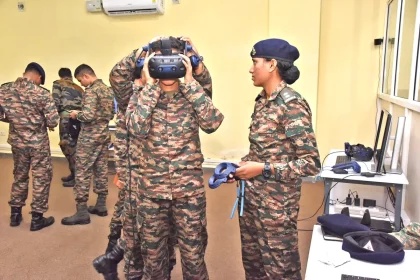ICGS Akshar, Second Adamya-Class Fast Patrol Vessel, Commissioned into Indian Coast Guard
Built by Goa Shipyard Limited, the 51-metre Adamya-class vessel strengthens India’s coastal surveillance and maritime security network.
Air Force Station Bhuj Celebrates 93rd Air Force Day, Honours Veeranganas of 1971 War
Air Force Station Bhuj Pays Tribute to 1971 War Heroines; Showcases IAF Strength and Community Spirit.
14 Young Officers from AOC Centre Visit MCEME to Explore Advanced Technical Training
The visit highlighted MCEME’s vital role in advanced training, indigenisation, and technological support essential for future-ready military operations.
Maj Gen Naveen Mahajan Leads Exercise Drone Kaushal-II Showcasing High-Altitude Drone Warfare Capabilities in the Himalayas
Exercise Drone Kaushal-II represents a significant step forward in the Indian Army’s modernisation journey.
Lt Gen Manoj Kumar Katiyar Emphasises Indigenous Innovation and Capability Development at Chandimandir
The event showcased cutting-edge indigenous solutions aimed at strengthening operational effectiveness and battlefield readiness.
Assam Rifles Hosts Annual Medical and Dental Officers Conclave 2025 in Shillong
The conclave served as a vital platform for sharing knowledge, discussing innovations, and reinforcing the commitment of the medical and…






